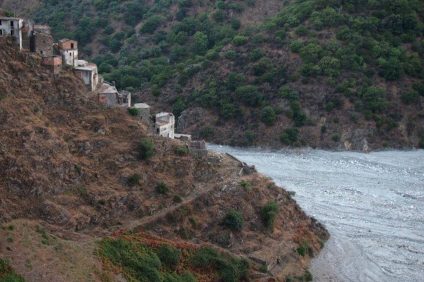Seat of the largest medieval historic center in Europe, Viterbo was a papal house and offers healing water springs.
Capital of the historical region of Tuscia, Viterbo is a city with a great historical and artistic heritage and numerous attractions.
It houses the largest medieval historic center in Europe. The tour in the old city deserves a stop in the San Pellegrino district, with the characteristic bridge houses and the typical external stairs of the ancient fourteenth-century buildings.
The Lazio town is also known as the City of the Popes. In the thirteenth century, for over twenty years, it hosted the heirs to the papal throne. And the Papal Palace, in Piazza San Lorenzo, is an evocative testimony of this.
Viterbo: the city loved by Dante and Michelangelo

They are mainly the hot Springs, however, the flagship of Viterbo. They are located an hour away from Rome and are off the routes of similar but more crowded places, such as Saturnia and Montecatini.
The waters have significant therapeutic effects, appreciated since the times of the ancient Etruscans and Romans.
Thanks to the sulphurous and carbonic gases, the Viterbo springs are excellent for the treatment of various chronic inflammatory diseases, such as rheumatism or osteoarticular pain.
The best known source is the Source of the Bullicame, even cited by Dante Alighieri in the Divine Comedy. The Bagni di Viterbo did not leave even the great one indifferent Michelangelo Buonarroti. Struck by their beauty, the artist made two pen drawings of them, kept in the Vicar de Lille Museum in France.
The College of Cardinals was born in Viterbo
From 1257 to 1281 Viterbo was the papal see instead of Rome.
In Papal Palace many popes lived with their court. The building is among the most prestigious in the city. It was built by the captain of the people Raniero Gatti. It is in Romanesque style and has a loggia called "delle benedizioni".
Inside the building there is the Hall of the Conclave, College of Cardinals that was born in Viterbo to force the prelates to agree on the election of Peter's heir.
First courses triumph on the Viterbo table

Cuisine inspired by ancient traditions, especially medieval ones, that of Viterbo will not leave you dissatisfied. In Viterbo it is above all the first courses that make up the lion's share. Like the earthworms, fresh pasta without egg, prepared with flour, water and salt and kneaded to obtain filaments, similar to classic spaghetti. A popular specialty, it was paired with very nutritious sauces. Her recipe was taught to girls by housewives waiting for the men to return from the fields.
Another specialty of the area is thecooked water, made with stale bread dipped in potato, tomato or chicory soup, or enriched with cod or lake fish with eggs.





